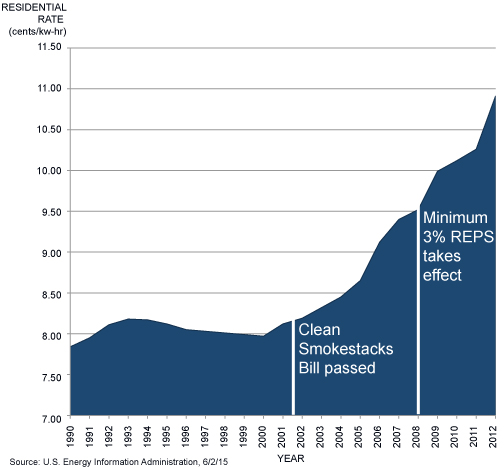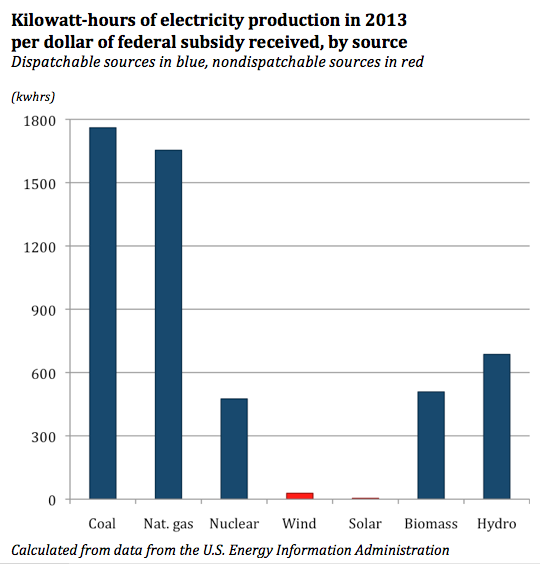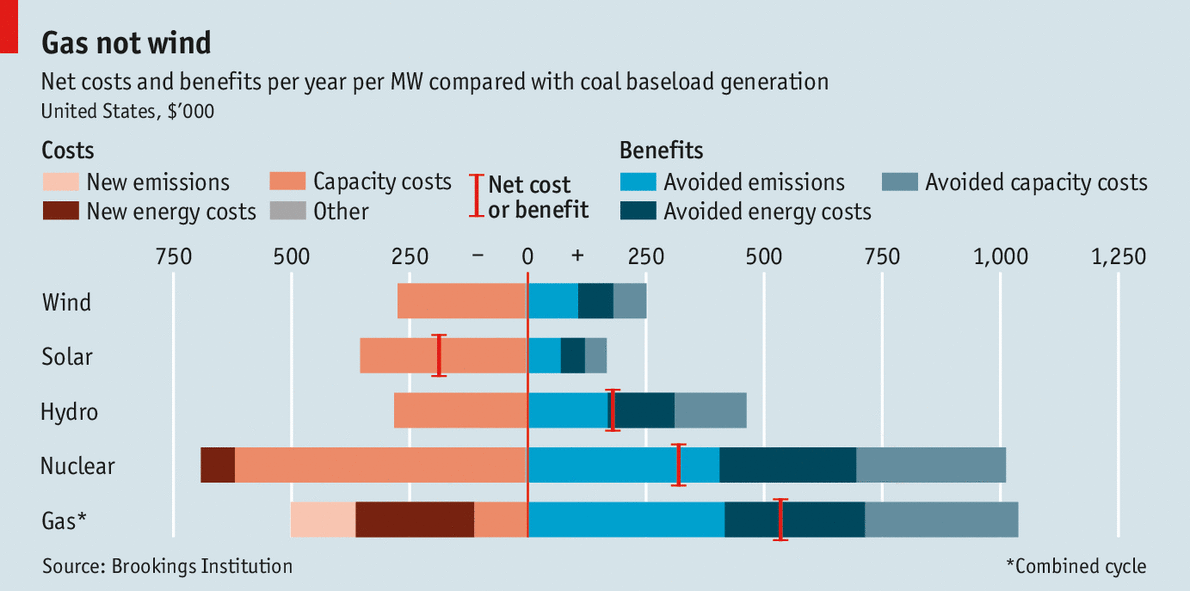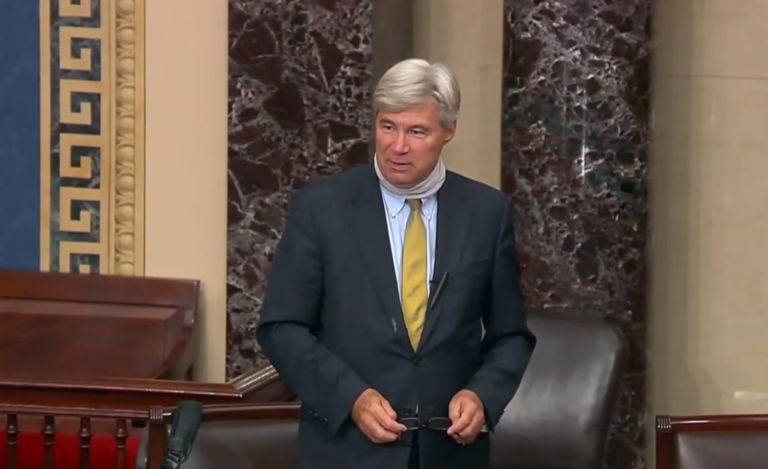The Utilities Commission has approved Duke’s plan for converting one of its coal plants to natural gas. Duke will build two combined cycle turbines with an option to seek a third (the commission rejected the third but left the option open). Capacity at the plant will go from 376 megawatts to 560 megawatts.
Environmental activists are peeved, apparently. A Sierra Club representative quoted in the Asheville Citizen-Times was not only upset, she was spouting demonstrable nonsense:
Emma Greenbaum, North Carolina organizing representative for Sierra Club, said she is pleased the commission turned down the third turbine but "disheartened that the approved plan allows for this oversized natural gas project to go forward.
"It is unfortunate that we’re being forced to continue on a climate-polluting path when energy efficiency and renewables continue to be the best, least cost solution for consumers and the environment. We will continue to advocate for the expansion of clean energy in our region and across the state as a transition to clean energy is the only responsible long-term solution to our energy needs," she said.
No, really: "the best, least cost solution for consumers and the environment." Let’s examine that further, because renewable energy sources are not even close to being cost-competitive, let alone "least cost."
Cost-competitiveness is the hallowed deception of the renewables industry. They are very dedicated to inducing people into somehow thinking renewables are actually cheaper for consumers. But that is absolute rubbish.
Throwing "energy efficiency" into the equation is one way they try it. As economists at the Beacon Hill Institute showed in their peer review of the renewable energy lobby’s report purporting to show great gains from the renewable energy portfolio standards,
Hidden in the text, tables, and charts is that there is little to be said for the renewable energy subsidies themselves. The cost savings will be the result of "energy efficiency," not renewable energy. Everything else is trivial. But by giving the impression that "not using energy" counts towards "renewable energy," they claim renewable energy is cheaper.
Think of it this way. It’s like a marshmallow-laden high-sugar kids’ cereal advertising itself as part of a healthy breakfast. Which means if you eat a little with a healthy breakfast, it would be part of it. But by itself it’s rather unhealthy.
Renewable energy is part of lower energy costs when you have a little with, well, not using energy at all. By itself, however …
Well, let’s consider:
It’s not least-cost now.
When you’re not looking, the same renewable energy lobby telling politicians and ratepayers that your electricity bill is "Better off with REPS" urges the Utilities Commission not to allow lower rates because lower rates would be bad for renewable energy sources.
Average residential electricity rates in North Carolina, 1990-2012
 >
>
It certainly can’t be least-cost if you shutter working coal plants to start up replacement renewable plants.
As it is, electricity generation from new plants is more expensive than electricity from existing plants; that’ll be worse when you replace an existing plant generating electricity from an efficient source like coal with ones relying on vastly inefficient sources.
It’s definitely not least cost when you fully account for the realities of nondispatchable renewable energy.
Those would include their well-known inefficiencies and flat-out inability to work when either the sun isn’t shining enough or the wind isn’t blowing. Nature, economics, simple math, and physics all work against nondispatchable renewable energy sources with respect to whether they can ever be cost-competitive with traditional sources.
Showering renewable sources with far more federal subsidies than other energy sources get hasn’t helped, either.

It can’t even be cost-competitive in the near future, let alone least-cost.
Renewable energy sure hasn’t become cost-competitive despite four decades’ worth of promising it’ll be cost-competitive in the near future. Six years ago the Institute for Energy Research felt prompted to ask "Will renewables become cost-competitive anytime soon?" and found the "almost there" keep-subsidies-flowing rhetoric going back to the 1970s.
Meanwhile, new MIT research is advocating an adjustable carbon tax to deal with the inescapable reality that renewables will never be cost-competitive with traditional energy sources on their own. They want cost-competitive renewable energy so badly they are willing to artificially spike traditional energy prices to cause that to happen by default (take that, poor ratepayers!).
This approach to competition is like Commodus secretly stabbing Maximus in the back before they fought, thinking that was the only way he might win their duel.
Furthermore, as Daily Caller reports,
The U.S. Federal Energy Regulatory Commission (FERC) is currently investigating how green energy undermines the reliability of the electrical grid. FERC believe there is a "significant risk" of electricity in the United States becoming unreliable because "wind and solar don’t offer the services the shuttered coal plants provided." Environmental regulations could make operating coal or natural gas power plant unprofitable, which could compromise the reliability of the entire power grid.
It is far from least-cost even when you try to factor in the environment.
A Brookings Institute study tried to incorporate the "social cost" of carbon dioxide emissions along with nondispatchable renewable energy sources’ need for backup baseload generation and levelized costs. The study found that "solar power is by far the most expensive way of reducing carbon emissions" and that "Wind is the next most expensive."

Attendees of the joint John Locke Foundation and NC WARN energy policy forum will remember that the panelists all agreed (see the end) that trying to generate a "social cost" measure of carbon dioxide emissions was futile.
Not to mention, trying to account for all social costs would require having to account for the many ecological impacts of the highly land-intensive facilities as well, and the hazardous materials they require.
Click here for the Rights & Regulation Update archive.
You can unsubscribe to this and all future e-mails from the John Locke Foundation by clicking the "Manage Subscriptions" button at the top of this newsletter.


